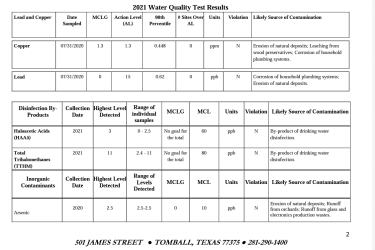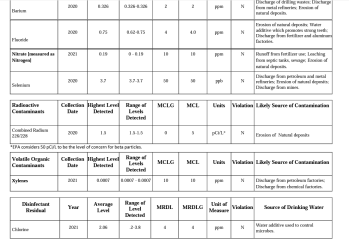I am doing a 150Gallon planted tank and am trying to figure out the budget friendly way to stock with fish. My current thoughts were to get 10-15 mollies or platies and let them just breed over time. I would like some more diversity with other fish or shrimp well but not sure what all would eat the fry. Any suggestions or questions are appreciated.
You are using an out of date browser. It may not display this or other websites correctly.
You should upgrade or use an alternative browser.
You should upgrade or use an alternative browser.
Stocking questions
- Thread starter DuCoop
- Start date
First question we need the answer for is, what is the GH and pH of your source water.
I would not have that many livebearers in both genders, as they will produce more fry that will not all be eaten with a planted tank to hide in, and soon you may have a serious problem. Male only solves this, if you have harder water that livebearers need. Soft water opens up a whole different universe!
Welcome to TFF.
I would not have that many livebearers in both genders, as they will produce more fry that will not all be eaten with a planted tank to hide in, and soon you may have a serious problem. Male only solves this, if you have harder water that livebearers need. Soft water opens up a whole different universe!
Welcome to TFF.

First question we need the answer for is, what is the GH and pH of your source water.
I would not have that many livebearers in both genders, as they will produce more fry that will not all be eaten with a planted tank to hide in, and soon you may have a serious problem. Male only solves this, if you have harder water that livebearers need. Soft water opens up a whole different universe!
Welcome to TFF.
I'll take a sample over to my local fish store and get it sampled tomorrow. In general the water in this area is hard. To the point that most people are putting in water softeners. When you say serious problem are you thinking of a overstocking issue or just issues with fish interactions because of the sexes? If its the overstocking, would adding some angel fish in help cull the Fry? The goal is to get more fish in the tank than the original 10. What would be a healthy average number of Mollies in a tank that size?
I'll take a sample over to my local fish store and get it sampled tomorrow. In general the water in this area is hard. To the point that most people are putting in water softeners. When you say serious problem are you thinking of a overstocking issue or just issues with fish interactions because of the sexes? If its the overstocking, would adding some angel fish in help cull the Fry? The goal is to get more fish in the tank than the original 10. What would be a healthy average number of Mollies in a tank that size?
On the parameters, the easiest way to get these parameters is to check the website of your water authority. This will be more accurate than fish store tests. And more reliable, as it will be the water source..
Do not use water that has been through a softener for fish. Just a caution as you mentioned many have them.
The serious problem I meant were hundreds of fry. Nothing will eat all of them, if you have several females within the 10-15 number if mixed gender.
Acquiring any fish to solve a problem is not advisable. Fish have their own needs, and these should be respected. Angelfish are a shoaling species, but a group of these is another story.
We still need the GH and pH to really consider species, but I'm not sure I follow you...do you have a reason for not acquiring suitable fish over time? Maybe I'm missing something.
This is all I can really get for the water. But.... This isn't really the water I'm on. We have what are called Municipal Utility Districts and each of these Mud's are their own water system. The well and water treatment facility is about 100 yards from my house and this well serves my neighborhood only. I'm in a new construction and there are no historical reports since they just opened in November. Getting any info from the mud is impossible. It was hard enough just figuring out who to pay.
As far as acquiring suitable fish over time right now its me asking questions out of ignorance. Im new to the hobby and trying to learn before I hop in and make a huge mistake.
As far as acquiring suitable fish over time right now its me asking questions out of ignorance. Im new to the hobby and trying to learn before I hop in and make a huge mistake.
Attachments
Nothing there we can use, GH/KH/pH are not included. The very minimal nitrate level is worth knowing, this is good.
I think you need to get the water tested in a fish store. Make sure they give you the number of each of these tests, which are GH (general hardness), KH (carbonate hardness or Alkalinity), and pH, and the unit of measure they are using for the GH and KH (the hobby uses two interchangeably, dH which stands for degrees or German degrees, and ppm which is parts per million which is equal to mg/l). If they don't do KH, that's fine, but the GH and pH are crucial here. Once you know the water parameters, you won't need GH and KH tests again unless you were to go down the more difficult road of adjusting them. The pH test would be a good one to have though, this is a frequently used test. API make a liquid test (most consider these more reliable than strip tests) kit for ammonia, nitrite, nitrate and pH. These are all you need generally.
Do not hesitate to ask questions. All of us started out knowing nothing and learned, often as we went which meant the fish were put through the hoops and many died. When I began keeping fish in school, there was no internet, only some books and a magazine, none of which were locally available anyway. There are many members on this forum who have incredible knowledge in certain areas of the hobby, and all of us are more than willing to assist where we can. Someone once wrote that the aquarist must be a biologist and a chemist; it can be daunting, but not insurmountable with the right advice.
I think you need to get the water tested in a fish store. Make sure they give you the number of each of these tests, which are GH (general hardness), KH (carbonate hardness or Alkalinity), and pH, and the unit of measure they are using for the GH and KH (the hobby uses two interchangeably, dH which stands for degrees or German degrees, and ppm which is parts per million which is equal to mg/l). If they don't do KH, that's fine, but the GH and pH are crucial here. Once you know the water parameters, you won't need GH and KH tests again unless you were to go down the more difficult road of adjusting them. The pH test would be a good one to have though, this is a frequently used test. API make a liquid test (most consider these more reliable than strip tests) kit for ammonia, nitrite, nitrate and pH. These are all you need generally.
Do not hesitate to ask questions. All of us started out knowing nothing and learned, often as we went which meant the fish were put through the hoops and many died. When I began keeping fish in school, there was no internet, only some books and a magazine, none of which were locally available anyway. There are many members on this forum who have incredible knowledge in certain areas of the hobby, and all of us are more than willing to assist where we can. Someone once wrote that the aquarist must be a biologist and a chemist; it can be daunting, but not insurmountable with the right advice.
If the store uses strips to test GH besides asking them for the number your tap water tests as, if it's high also ask them for the upper limit of the test. Some strips have a 180 ppm/10 dH upper limit for GH and when the strip reads that level it could be 180 ppm or anything higher. Platies and mollies need GH higher than 180 ppm but those strips which only measure that high can't tell you if your water is hard enough for them.
The hardness measured at 10 and the ph was 7.8Nothing there we can use, GH/KH/pH are not included. The very minimal nitrate level is worth knowing, this is good.
I think you need to get the water tested in a fish store. Make sure they give you the number of each of these tests, which are GH (general hardness), KH (carbonate hardness or Alkalinity), and pH, and the unit of measure they are using for the GH and KH (the hobby uses two interchangeably, dH which stands for degrees or German degrees, and ppm which is parts per million which is equal to mg/l). If they don't do KH, that's fine, but the GH and pH are crucial here. Once you know the water parameters, you won't need GH and KH tests again unless you were to go down the more difficult road of adjusting them. The pH test would be a good one to have though, this is a frequently used test. API make a liquid test (most consider these more reliable than strip tests) kit for ammonia, nitrite, nitrate and pH. These are all you need generally.
Do not hesitate to ask questions. All of us started out knowing nothing and learned, often as we went which meant the fish were put through the hoops and many died. When I began keeping fish in school, there was no internet, only some books and a magazine, none of which were locally available anyway. There are many members on this forum who have incredible knowledge in certain areas of the hobby, and all of us are more than willing to assist where we can. Someone once wrote that the aquarist must be a biologist and a chemist; it can be daunting, but not insurmountable with the right advice.
No ammonia or nitrates/nitrites showed in the test either
The hardness measured at 10 and the ph was 7.8
No ammonia or nitrates/nitrites showed in the test either
I would assume this was 10 dH, not 10 ppm, but can you confirm? These are two very different levels.
Yes dH.I would assume this was 10 dH, not 10 ppm, but can you confirm? These are two very
Yes dH.
OK, so this is low for livebearers especially mollies who should have it in the 15 dH up to 30 dH range. Platies would probably manage OK.
Similar threads
- Replies
- 13
- Views
- 517
- Replies
- 8
- Views
- 427



